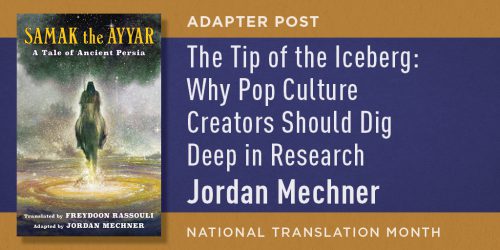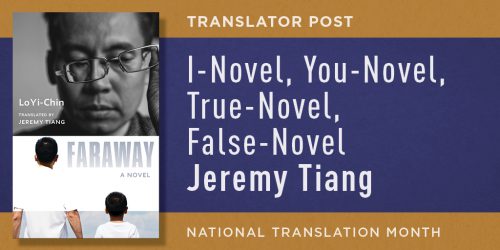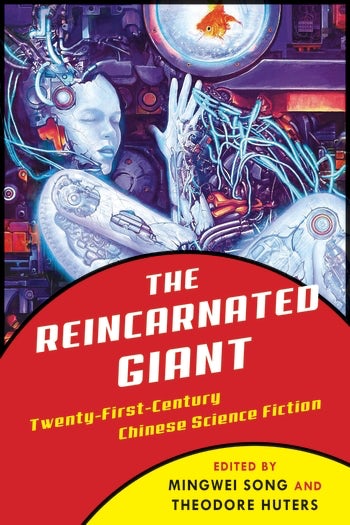Q&A: Ari Larissa Heinrich and Chi Ta-wei on The Membranes

First published in Taiwan in 1995, Chi Ta-wei’s The Membranes is a classic of queer speculative fiction in Chinese. Predicting everything from fitness tracking to social media saturation, this visionary and sublime novel stands out for its queer and trans themes. In this Q&A, translator Ari Larissa Heinrich (professor of Chinese literature and media at the Australian National University) and author Chi Ta-wei (renowned writer and scholar from Taiwan) discuss different aspects of the novel, including its title, how today’s technology could influence a future novel, and whether the book itself is transgender.
Ari Larissa Heinrich: Peaches resonate in The Membranes. They have connotations of lushness, sexuality, and sensory pleasure (in addition, of course, to Momotaro traditions). In some readings of T. S. Eliot (“Do I dare to eat a peach?”), the act of eating a peach can symbolize a kind of grasping for youth (and potential loss of dentures). Are there other symbolic aspects of the peach we should look out for in this novel? If Momo were among us today, what would she eat when she wanted to indulge herself?
Chi Ta-wei: When I wrote The Membranes, I did not take the initiative to seek out the images of peaches. Instead, the associations with peaches came to my mind. This was enabled by the Taiwanese context in which links to Japan were so taken for granted by locals like me. The book’s title in its original language, Chinese, is Mo. Upon hearing this title, the average person in Taiwan would easily associate it with momo, the Japanese word for peaches, and by extension, with Momotarō-san, a hero in Japanese folklore and a household name in Taiwan. The protagonist in The Membranes is a queer version of Momotarō-san.
As Momo, the protagonist of the novel, is victimized by an omnipotent enterprise, it is ironic that, as of 2021, an omnipresent online retailer in Taiwan is called Momo and uses a peach as its brand logo. This irony reveals how the Chinese language and Japanese elements have been consistently blended in Taiwan. If Momo were with us today, I guess she wouldn’t be able to resist the lure of pearl tea, whose Taiwanese-style tapioca pearls have been trending in Japan. I am actually inspired to develop a new science-fiction work on those edible pearls. Do you care for some peach tea with pearls, my dear Ari?
Heinrich: If you could travel back in time and take your dog for a walk with yourself in the early 1990s, as you were composing The Membranes, where would you walk? And what would you tell yourself?
Chi: Before I left Taiwan for UCLA to pursue a PhD degree in 1999, I lived with three dogs and my partner in a satellite city near Taipei. It was my partner, rather than I, who walked our three dogs with me tagging along. We took walks along the river running through Taipei and on the beaches in Tamsui. If I could travel back to that time, I would love to revisit the same river and the same beaches with the same partner (who is still with me) and the same dogs (who are now angels in heaven after traveling with me from Taipei to Los Angeles and then to Connecticut). When I was in my 20s, I was very critical of my own fiction, as if I were my own Tiger Mom. If I could talk to my younger self, I would simply tell him to enjoy his non-homonormative life and his queer fiction as they are.
Heinrich: The Membranes was written more than twenty years ago, yet it predicts contemporary concerns with painful accuracy. If you wrote The Membranes today, what kinds of things might be different about the novel? Or maybe I should ask: If you were to write another novel about the future, what might it say about technology and our present moment?
Chi: The Membranes envisions a future where one cannot tell the humans from the cyborgs in a world insulated from a too-intense sun. Honestly, the predications in the novel were not too difficult to make for me, an average consumer rather than a diehard fan of popular culture at the end of the twentieth century. I grew up in the 1980s reading the once widely circulated Japanese manga by Osamu Tezuka (1928–1989), which flaunts such androids as Astro Boy and the daughter of the infamous surgeon Black Jack. These characters had been well known in Taiwan even before the popular movie Blade Runner. In college, I was inspired to write The Membranes after my partner, once a graduate student in atmospheric science, told me about ozone depletion while walking the dogs along the river. Like other ordinary users of BBS in 1990s Taiwan, I could foresee the power of the internet in the new millennium, but I could not predict the aggressiveness of social media, which manipulates us by always gnawingly prompting us to synchronize and compete with other internet users. In The Membranes, it never occurs to any character to update and network herself with others online. When I was reading Kazuo Ishiguro’s Klara and the Sun, I wondered when Klara, the android companion, would start to synchronize with its fellow androids. Would Klara feel like a loser once it fails to catch up with others online? If I write a new work of speculative fiction, I will definitely dramatize the tyranny of social media.
Heinrich: Do you think it’s accurate to call The Membranes a transgender novel? (And I mean that in all senses of the word—including for the novel itself, i.e., can the novel have a gender?)
Chi: Since the publication of The Membranes in 1990s Taiwan, it did not occur to me that the book may be a transgender novel until you suggested it to me when you were busy translating the novel in 2019. It is true that, as an academic teaching gender studies and queer theory, I have talked about the transgender constantly in the classroom. But you have made me realize that, outside of work, I have been so preoccupied with cisgenderism among gay men that I have forgotten how my own fiction and I were once related to transgenderism. Thinking hard, I recall that as a teenager, I sometimes literally dreamed about my transformation into a woman, justified to desire men.
Before the emergence of open discussions of alternatives to heterosexuality in Taiwan in the 1990s, I simply tended to conflate the urge to be reassigned another gender with the urge to date another person of the same gender. As discourse on non-heterosexual lives became increasingly acceptable in Taiwan, I tried to learn to become a gay man thanks to the “normative” effects of these gay-friendly discourses. At the same time, I became progressively distracted and distant from my primordial conflation of homosexuality with transgenderism.
This often-forgotten conflation can be located in the literature by some writers of my generation, such as Qiu Miaojin, who published all her fiction before the rise of normative discourse on homosexuality. When I reread Qiu’s Journal of a Crocodile and Last Words from Montmartre, I find it can be seriously reductive to pinpoint her protagonists as either lesbians or transgender men.
Thanks to your reminder, I belatedly agree that there is a residue of my conflation of homosexuality with transgenderism in The Membranes, and the protagonist Momo can be considered a transgender character. I also admit that I intentionally assigned The Membranes a gender other than that of a heterosexual man. Because I was not happy with the common tendency to model the plot of a novel after a heterosexual man’s predatory investigation of a woman as a prey, I tried to minimalize the presence and significance of men in The Membranes. But I am not yet sure if the form of the novel itself is transgender.








